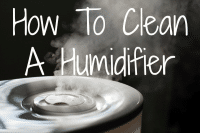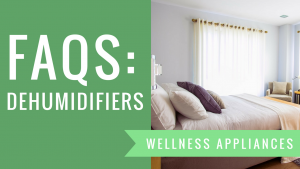Contents
With many humidifier providers at do-it-yourself and home center stores, online website providers, and HVAC (Heating Ventilation and Air conditioning) contractors, you probably don’t know which one is the best to buy for your needs. It certainly can be a difficult and confusing decision to make. The first thing you want to know is why you need a humidifier. What features do you want it to have, how do you want it to function, and where do you want it to be located. After you know what you want, you will need to determine your supplier—and have trust in the supplier.
This guide has been created to point you in the right direction for making a wise decision with budgetary considerations and types of humidifiers in the marketplace today.
Today people are more aware about having humidity in their home. Winter brings dry air along with the cold for outdoors and inside the home. Warm and dry climates, including home heat sources, reduce humidity. Retrofitting a humidifier to your existing gas-forced air furnace is a great solution requiring only that you adjust the humidity level to where it’s comfortable and beneficial.
The ideal home humidity should be between 30% and 50%. If it’s higher, your windows will condensate and mold can grow. Humidity extends the life of wood furniture, floors, artwork, and papers. Moisture in the air relieves stuffy noses, static electricity when walking across carpeting and flooring then touching doorknobs and metal. It’s good for your skin, sinuses, hair, and your houseplants love it too.
Do You Need a Whole-House Humidifier?
With humidity in your home, you will feel warmer and can turn the thermostat down saving you money on your heating bill. With a whole-house humidifier, you turn it on, set the humidity level, and forget it. It is more costly at the outset, but over time, it saves money and provides constant humidity throughout your entire house until you turn it off. Low humidity promotes health problems causing allergies, asthma, nosebleeds, dry and congested mucous membranes, dry skin, dry coughs, chapped dry lips and skin, and respiratory congestion. Some sufferers of COPD and emphysema may benefit from humidity.
Types of Whole-House Humidifiers
There are three types of humidifiers available for a whole-house system.
- Drum (bypass)—The easiest to install and costs less than other types. It installs on your furnace’s air return ductwork by a pipe putting water into a pan (reservoir) that is attached to the furnace.
- Bypass Flow-through—Midway in terms of performance and cost, this type of humidifier uses a pipe to take water to a control value at the top of the humidifier. When the hygrostat calls for humidity, the valve opens spraying water onto a biscuit similar to steel wool. There is no standing water but they use evaporation with a filter that water drips through.
- Mist/Steam—The most effective and the most expensive, this unit produces steam and not evaporation. The desired humidity is easier to control. This unit is available as either cold or hot water putting cold or hot steam into your supply line. It needs a water supply line and electricity. Because there is no standing water, mold growth is low.
- Evaporative humidifiers will not cause the white residue and dust associated with mist humidifiers. Evaporative units blow air across a wick filter. Water crawls up the wick and evaporates as the dry air passes over it. The white dust is caused by minerals in hard water. It has a built-in humidistat to measure humidity. It does not have a thermometer for measuring temperature and does not need one. It will automatically shut off when the tanks are empty.
- Ultrasonic humidifiers produce more white dust and residue because it has no filters to trap or contain those mineral deposits returning to the room with the moisture landing on furniture and electronics as dust close to the humidifier. The white flecks and dust are created from hard water minerals. Ultrasonic humidifiers are quieter than evaporative units that use a fan to disperse water vapor. Warm mist humidifiers produce more noise than ultrasonic humidifiers, but are quieter than evaporative models.
Regulating Humidity
Less can be more. Pumping more humidity into your home is not better. That is why professionals tell us to keep the humidity at between 30% and 50%. Anything more will peel paint, cause wallpaper to come apart at the seams, cause mold, dust mites, and bacteria to grow.
Hygrostats and Humidistats
These instruments as associated with humidifiers and de-humidifiers (remove humidity) and are sometimes used interchangeably. They actually have different functions.
- Humidistat—measures and controls humidity in the room or whole house. It shows the percentage of moisture in the air.
- Hygrometer—displays the relative humidity in the room or whole house. They might be built into home humidifiers, but if it is not paired with a humidistat, it does not control humidity; it only shows humidity levels. It will signal the need for humidity.
Portable Humidifier Types
Portable humidifiers are ideal for home and travel, dorm rooms, offices, baby nurseries, children’s rooms, and other places you want to have humidity. Do you want a tabletop or console portable unit?
- Tabletop humidifiers—are the less expensive and are good for a single room. The downside is they need to be refilled with water more often because the reservoir holding water is small.
- Evaporative tabletop models blow cool air over a wet wick, filter, or pad with its fan. It is self-regulating since high humidity equals less absorption.
- Warm-mist units boil the water with a heating element then release cool steam. These might be dangerous around children, elders, and pets. These are more expensive to operate.
- Ultrasonic tabletop humidifiers emit water vapor using a vibrating nebulizer. The mist is cool and the energy costs are low. They do leave a white mineral deposit around the unit and any standing water is a breeding ground for mold and bacteria. Most new units have measures to prevent this.
- Impeller models create a cool mist by using a rotating disk. These too have similar issues to the ultrasonic model. They can create dust from hard water minerals and work well with distilled or soft water.
- Console humidifiers—can be moved from one room to another and are larger than tabletop units.
- They generate a great amount of humidity whether they are ultrasonic or evaporative.
- They can simultaneously humidify more than only one room.
- Because they are electric, they can be placed in out-of-the-way and high-traffic areas convenient to outlets.
- The water tank is larger eliminating the need for continuous refilling and somewhat more awkward to deal with.
- Evaporative humidifiers are noisier than the ultrasonic humidifiers. So, run it a few hours before going to bed and turn it off. You will have a nice humidity level while you sleep this way.
We hope this has dispelled any anxieties you might have had and that you feel confident in purchase what you need for you and your family’s experience. Happy shopping!




